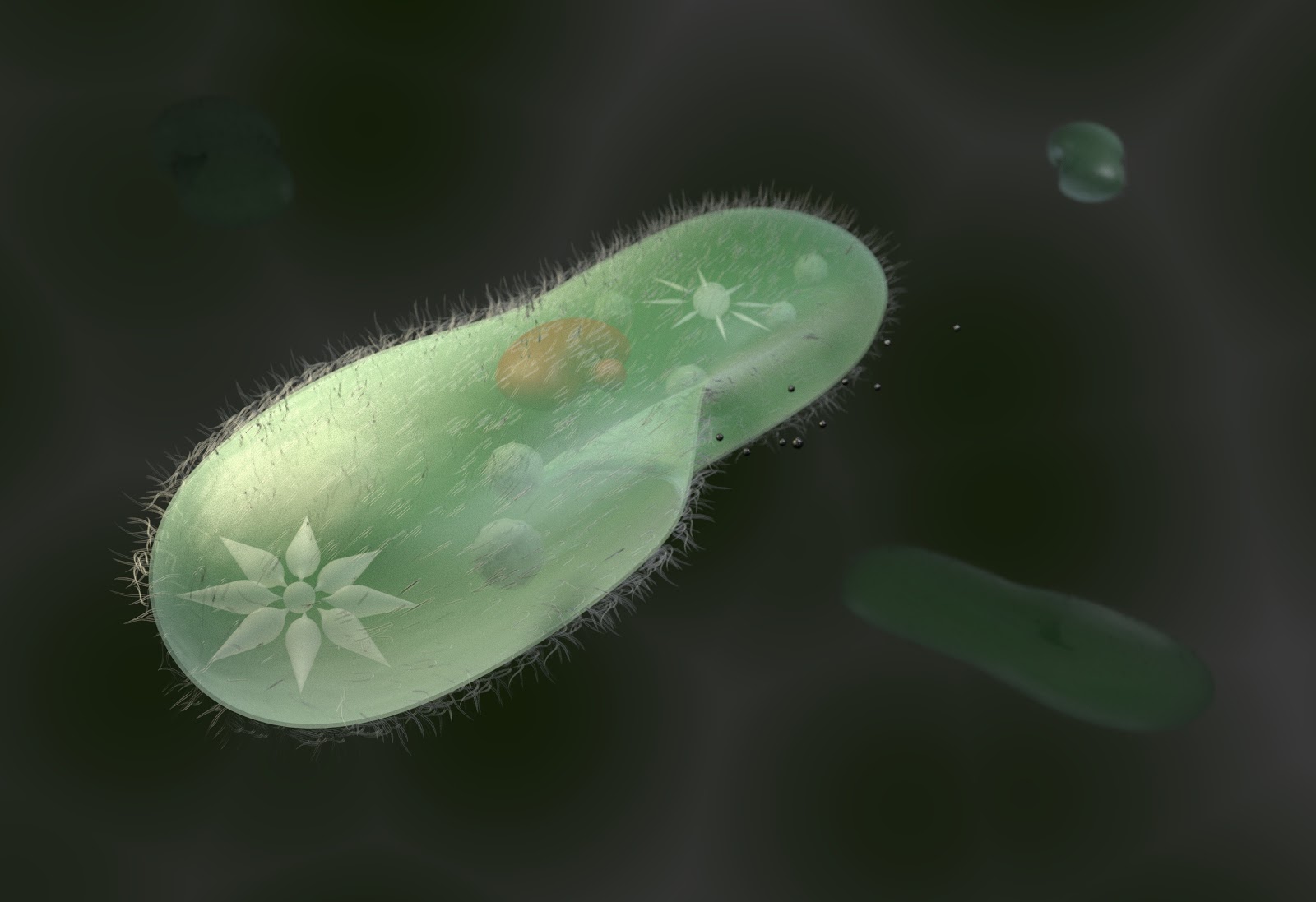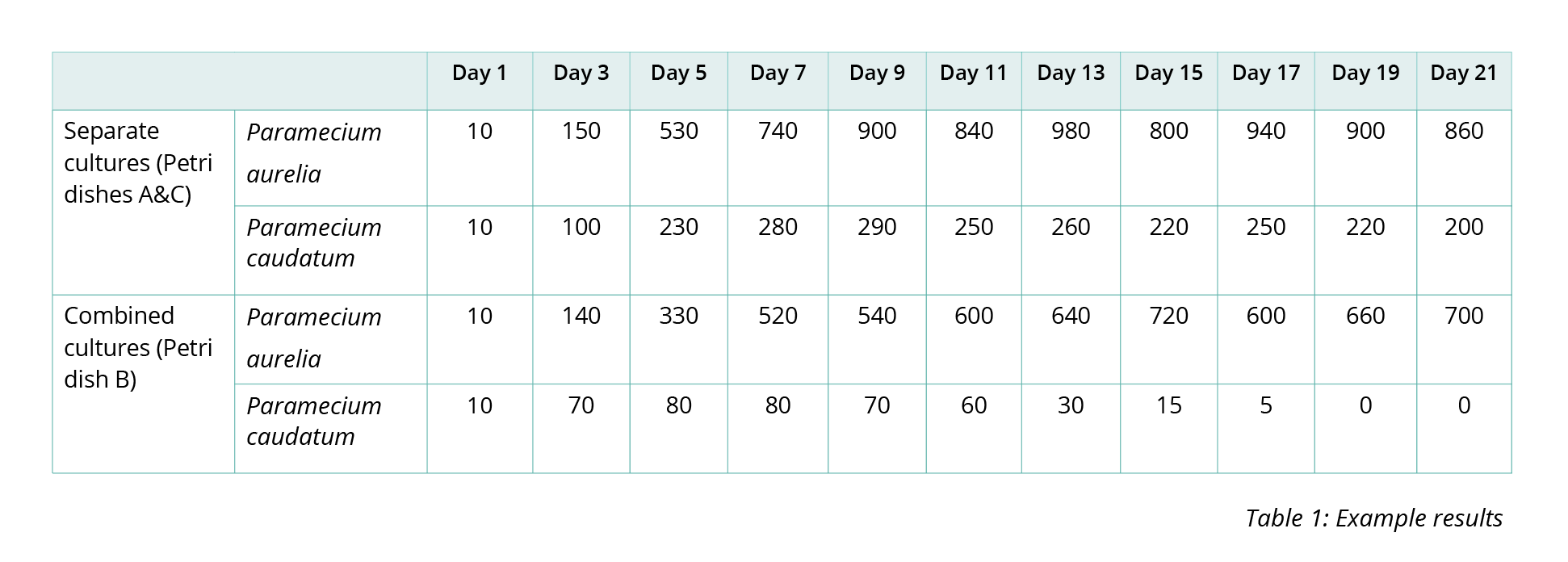Competitive Exclusion Principle

AUSTRALIAN CURRICULUM ALIGNMENT
-
Relationships and interactions between species in ecosystems include predation, competition, symbiosis and disease
BACKGROUND
The competitive exclusion principle, or Gause’s law, proposes that two species competing for the same limited resources cannot sustainably coexist or maintain constant population values. Intraspecific competition describes organisms within the same species competing for resources, leading the population to reach carrying capacity. Carrying capacity refers to the maximum population size a species can sustain within its environmental limitations. Interspecific competition describes competition for resources between different species of organisms. Species can be limited by both their carrying capacity (intraspecific competition) and the interspecific competition. When two species compete within the same ecological niche, the competitive exclusion principle predicts that the better-adapted species, even if only slightly better adapted, will drive the other to local extinction. In the 1930s, biologist Georgy Gause explored the idea of interspecific competition in a ground-breaking study of competition in Paramecium. Paramecia are aquatic single-celled ciliates that survive on a diet of bacteria, yeast, algae and other small protozoa. Based on the findings of this experiment and other research, Gause developed the competitive exclusion principle.
In this investigation, students explore how competition affects population growth, and put the competitive exclusion principle to the test. Following a very similar experiment design to Gause’s original Paramecium experiment, students examine two Paramecium species; Paramecium Caudatum and Paramecium Aurelia. These two species make great model organisms to test this principle due to their similarity, and the fact they compete directly for food. However, the two vary in size, with Paramecium Caudatum approximately four times the size of Paramecium Aurelia. Students are tasked with growing the two species both separately and together in a culture medium. The three cultures samples are maintained within the exact same environmental conditions, as Gause's law only applies if the ecological factors are constant. Over three weeks, students observe population growth to determine how competition for resources affects population growth.
PREPARATION - BY LAB TECHNICIAN
Preparing Cultures
- As soon as your shipment arrives, open the shipping container, remove the Paramecium culture jars, and inspect your culture. Loosen the lids on the containers.
- Aerate the culture using a plastic pipette. To do this, hold the pipette tip into the culture water and squeeze the bulb. Raise the pipette and release the bulb; allowing it to fill with air once again. Repeat this step four more times to assist in replacing the oxygen depleted during shipping. Use a different pipette for each culture to avoid contamination.
-
Lightly place the lid back on the containers; careful not to screw too tightly. Maintain the culture jar within room temperature (Approx. 21°C), away from direct sunlight. Plan to conduct your experiment with the Paramecium within three days of your shipment arriving. Ensure you have sufficient Paramecium for each student and take into account that some Paramecium may die.
METHOD - STUDENT ACTIVITY
- State your hypothesis.
- Label three clean petri dishes as follows.

-
Label three clean Petri dishes A, B and C.
- Add 50mL of Paramecium culture medium to each dish.
- Using a graduated cylinder, transfer 20 mL of Paramecium aurelia into Petri dish A.
- Transfer10 mL of Paramecium caudatum and 10 mL of Paramecium aurelia into Petri dish B.
- Transfer 20 mL of Paramecium caudatum into Petri dish C.
- Add six grains of rice to each dish.
- Cover each of the Petri dishes containing the Paramecium cultures with cheesecloth.
- Store the Petri dishes at a consistent temperature of 24°C on a flat surface where they will not be disturbed. Keep away from direct sunlight.
- Using a fresh sterile pipette, place 1 mL of liquid from each sample in a Sedgewick Rafter cell.
- Using a compound microscope, count the relative number of Paramecium of each species in each Petri dish.
- Repeat the count every second day for 3 weeks.
OBSERVATION AND RESULTS
Below is an example of expected results based on initial population density of Paramecium were 10 per 1 mL. This is to be used as a guide only as individual results will vary.

- Plot your results as a line graph.
- Plot the growth of each species in Petri dish C on the same axes, with time (every 2 days) on the x-axis and population size (Paramecium per 1 mL) on the y-axis.
- Combine your results with the rest of the class to get class results.
- Plot the class results as a line graph.
- Describe what has occurred in populations A, B and C. Identify whether the populations increased or decreased or remained stable.
INVESTIGATIONS
-
Was your hypothesis supported? Provide reasons.
- What are the advantages and disadvantages of this counting technique?
- What are some limitations in the experiment design? Suggest how it might be improved.
- Compare the population sizes of each Paramecium species in the separated (A and B) and mixed cultures (C). What do the results reveal about how competition affects population growth?
- Do your results support or refute the competitive exclusion principle? Provide evidence from your results.
- Did the trends in the class results differ from your own results?
EXTENSION EXERCISES
Exponential growth describes population growth that is unlimited. Logistic growth describes growth rates that are limited by a number of factors, including predators and food scarcity as well as competition for food and habitat. Which type of growth was exhibited in the Paramecium populations containing only one of the species? Determine the carrying capacity of the organism in this model environment.
TEACHING NOTES
-
Demonstrate the correct method of preparing the Paramecium cultures in the petri dish before students begin the procedure.
- Students may be tempted to add too much rice to each petri dish; however, inform students that 6 grains of uncooked rice will be sufficient.
- Ensure students understand the importance of following the exact same procedure for each culture, to generate the most accurate results possible. Instruct students to add the exact same measurement of cultures to each petri dish; add the same number of rice grains; use the same method for counting; and maintain the culture within the same environmental conditions. Environmental conditions include access to light and temperature.
- There are quieting solutions, such as Protoslo®, available that will allow you to slow the organism’s movement without damaging them. This makes it easier for students to count the Paramecium culture under the microscope.
 Time Requirements
Time Requirements
- 50 mins
 Material List
Material List
- Pure cultures of Paramecium Caudatum
- Pure cultures of Paramecium Aurelia
- Paramecium Culture Medium
- Grains of rice
- 3 Deep Petri Dishes
- Sedgewick Rafter Cell
- Graduated Cylinder
- Mosquito Net/Cheese Cloth
- Sterile Plastic Pipettes
- Compound Microscope
 Safety Requirements
Safety Requirements
-
Wear appropriate Personal Protective Equipment (PPE), including gloves and lab coat.
- Paramecia are harmless to humans, but swamp or pond water may contain pathogens. Wash hands thoroughly before and after handling living specimens.
